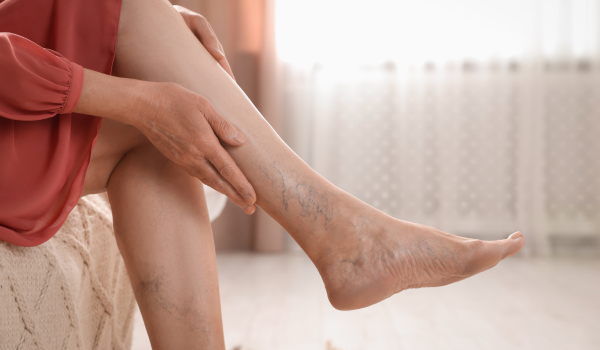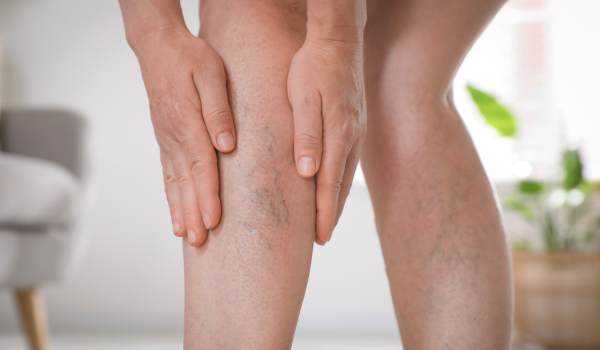.png)
Understanding venous stasis
Venous stasis is a circulatory condition where blood flow in the veins—especially in the legs—slows down or becomes stagnant. Over time, this poor circulation can lead to swelling, skin discoloration, varicose veins, and even leg ulcers or blood clots. The underlying cause is typically malfunctioning valves in the veins, which prevent blood from efficiently flowing back to the heart.
While venous stasis can be treated, prevention is far more effective and sustainable. With the right lifestyle changes, many people can avoid this condition altogether or significantly reduce its impact. This article explores evidence-backed strategies to keep your veins healthy and your circulation strong.
Why prevention matters
Preventing venous stasis is not just about avoiding discomfort. It’s about protecting your long-term vascular health and reducing your risk of complications like:
-
Chronic leg swelling
-
Venous eczema and ulcers
-
Deep vein thrombosis (DVT)
-
Increased likelihood of surgical intervention
-
Decreased mobility and quality of life
By taking small daily steps, especially if you’re in a high-risk group (e.g., sedentary lifestyle, obesity, pregnancy, standing jobs), you can delay or completely avoid the onset of venous stasis.
Walk more every day
Walking is one of the simplest and most effective exercises to prevent venous stasis. Each step activates your calf muscles, which act as a natural pump to push blood upward against gravity.
Tips to increase daily walking:
-
Park farther away at work or stores
-
Take 10-minute walk breaks during the day
-
Use the stairs instead of elevators
-
Aim for at least 30 minutes of walking 5 days a week
-
Use a step tracker or pedometer to stay motivated
If walking is difficult due to age or disability, water walking or gentle cycling can provide similar benefits without joint strain.
Elevate your legs regularly
Leg elevation helps gravity work in your favor by allowing blood to flow back to your heart. It’s particularly helpful after long periods of standing or sitting.
How to elevate your legs effectively:
-
Prop legs on a pillow above heart level for 15–30 minutes, 2–3 times a day
-
Use a recliner or adjustable bed at home
-
Avoid crossing your legs, as it restricts blood flow
-
At night, place a pillow under your feet to keep them slightly elevated
Incorporating this habit daily can dramatically reduce swelling and pressure in the lower limbs.
Avoid prolonged sitting
Sitting for long hours without movement increases the risk of venous stasis, especially for office workers, drivers, and frequent travelers.
Tips to break the sitting cycle:
-
Stand up and stretch every 30–60 minutes
-
Use a sit-stand desk or adjustable workstation
-
Perform seated leg lifts or ankle rolls
-
Take brief walks during phone calls or breaks
-
Use reminders or apps to alert you to move
Simple micro-movements throughout the day stimulate circulation and reduce the burden on your veins.
Manage your weight
Obesity is a major risk factor for venous stasis. Extra body weight puts pressure on your veins and makes it harder for blood to circulate properly.
Healthy weight management strategies:
-
Follow a balanced, anti-inflammatory diet (fruits, vegetables, lean protein, whole grains)
-
Reduce salt intake to minimize fluid retention
-
Avoid processed and sugary foods
-
Stay active with at least 150 minutes of moderate exercise per week
-
Consult with a healthcare provider or nutritionist for a tailored plan
Losing even a small amount of weight can significantly reduce venous pressure and prevent complications.
Stay hydrated
Dehydration can make blood thicker and increase the risk of clot formation, which exacerbates venous stasis.
How to stay well-hydrated:
-
Aim for at least 8 glasses (2 liters) of water daily
-
Avoid excessive caffeine and alcohol, which can dehydrate
-
Include hydrating foods like watermelon, cucumber, and oranges
-
Drink more water during hot weather or after exercise
Proper hydration supports circulation, digestion, and energy levels—all essential to vascular health.
Wear compression garments
Compression socks or stockings provide external pressure that supports vein function and prevents blood from pooling in the legs.
When and how to use compression:
-
Choose medical-grade compression (15–30 mmHg) for prevention
-
Wear during travel, long workdays, or after surgery
-
Ensure proper fit and comfort; consult a healthcare provider for sizing
-
Remove at night unless otherwise directed
Wearing compression garments consistently can greatly reduce your risk of developing venous stasis, especially if you’re on your feet a lot.
Avoid tight clothing
Tight clothing around the waist, hips, or thighs can restrict blood flow and worsen circulation.
Clothing tips for healthy veins:
-
Opt for loose-fitting pants, socks, and underwear
-
Avoid elastic bands that dig into your skin
-
Choose breathable fabrics to reduce inflammation
-
Use maternity support garments during pregnancy (if approved by a doctor)
What you wear daily can either support or hinder proper blood circulation.
Exercise your legs while sitting
Even when sitting, you can stimulate blood flow with a few simple leg exercises that require no equipment.
Seated leg exercises:
-
Ankle rolls (10–15 each direction)
-
Heel-to-toe raises
-
Leg extensions
-
Toe taps
-
Marching in place
Doing these exercises throughout the day prevents stagnation and supports muscle tone.
Quit smoking
Smoking damages blood vessels, reduces oxygen in the blood, and increases the risk of clot formation. All of these factors accelerate the development of venous stasis and related conditions.
Steps to quit:
-
Join a smoking cessation program
-
Use nicotine replacement therapy (patches, gum)
-
Seek support from counselors or online communities
-
Talk to your doctor about medications that aid quitting
Quitting smoking benefits your entire cardiovascular system and lowers your risk of chronic vein disease.
Limit alcohol intake
Excessive alcohol can lead to dehydration, liver problems, and increased blood pressure—all of which negatively affect vein health.
Moderate consumption means:
-
No more than 1 drink per day for women
-
No more than 2 drinks per day for men
-
Opt for non-alcoholic alternatives when possible
Limiting alcohol helps maintain better hydration, blood pressure, and circulation.
Improve sleep positioning
Sleeping on your back with slightly elevated legs may promote better circulation during the night.
Tips for better vein-friendly sleep:
-
Use a wedge pillow or elevate the foot of the bed
-
Avoid sleeping in a curled or constricted position
-
Keep the room cool to reduce inflammation
-
Consider compression sleeves for nighttime use (if advised by a doctor)
Good sleep supports vascular repair and helps maintain daily energy for movement.
Check medications
Some medications can increase the risk of blood clotting or fluid retention, which may contribute to venous stasis.
Common culprits:
-
Hormonal therapies (e.g., birth control, HRT)
-
Certain antidepressants or antipsychotics
-
Diuretics or antihypertensives
-
Long-term corticosteroids
Discuss with your doctor whether your current prescriptions may affect circulation and if adjustments are needed.
Regular check-ups
If you’re at risk (e.g., have a sedentary job, family history, or prior DVT), regular check-ups can help catch early signs of venous issues.
What to expect:
-
Leg examination for swelling, discoloration, or varicose veins
-
Discussion of symptoms (heaviness, aching, fatigue)
-
Possible referral to a vascular specialist
-
Ultrasound or Doppler tests if needed
Early detection allows for early prevention.
Travel tips
Long flights or road trips can increase the risk of venous stasis and blood clots. Prepare ahead to keep your veins healthy during travel.
Healthy travel practices:
-
Walk the aisle every 1–2 hours on flights
-
Do seated calf and ankle exercises
-
Wear compression socks during long travel
-
Stay hydrated and avoid alcohol on planes
-
Avoid crossing legs for extended periods
Simple awareness during travel can prevent a serious vascular event.
Make movement a habit
The key to preventing venous stasis lies in continuous, low-impact movement throughout the day.
Ideas to stay active:
-
Join a walking group or fitness class
-
Use a standing desk
-
Take stairs instead of elevators
-
Play with pets or kids outdoors
-
Set daily movement goals
Even if you're not “working out,” staying mobile makes a world of difference to your circulatory health.
Conclusion: Prevention is powerful
Venous stasis is often preventable. By making small but consistent changes—like walking more, avoiding prolonged sitting, and wearing compression—you can significantly reduce your risk and improve your overall vascular health.
The earlier you start, the better your chances of avoiding long-term complications like ulcers or surgery. Take action now to keep your legs strong, energized, and healthy for years to come.

.png)
.png)
.png)
.png)
.png)
.png)
.png)
.png)
.png)



